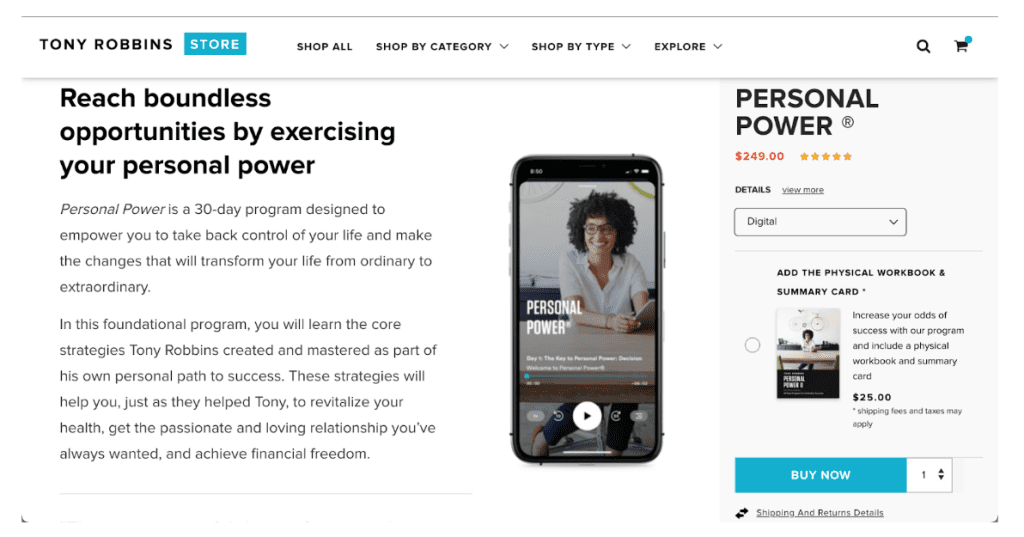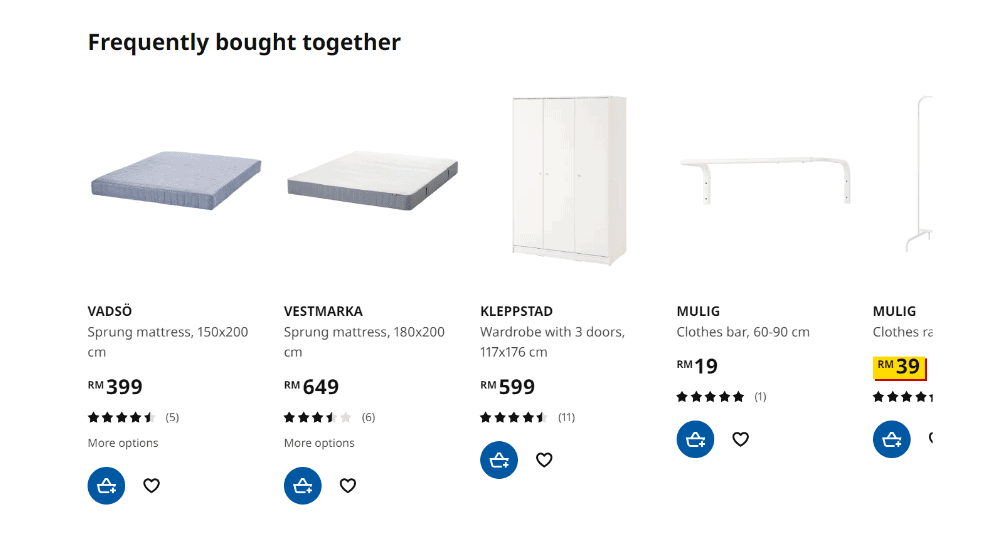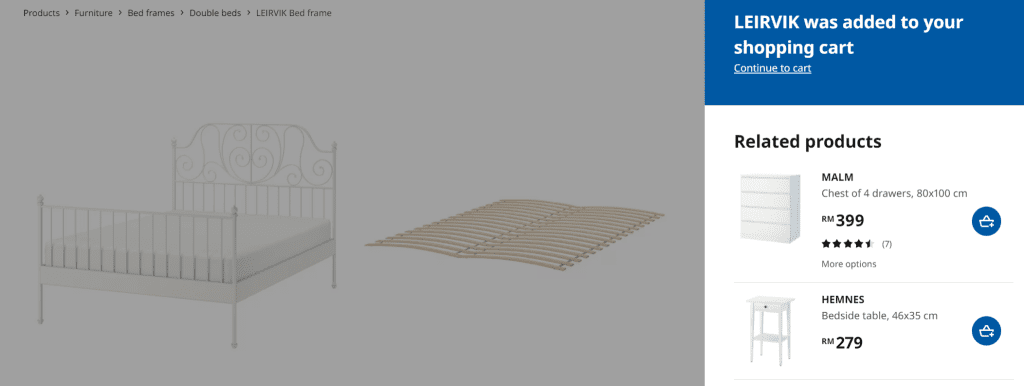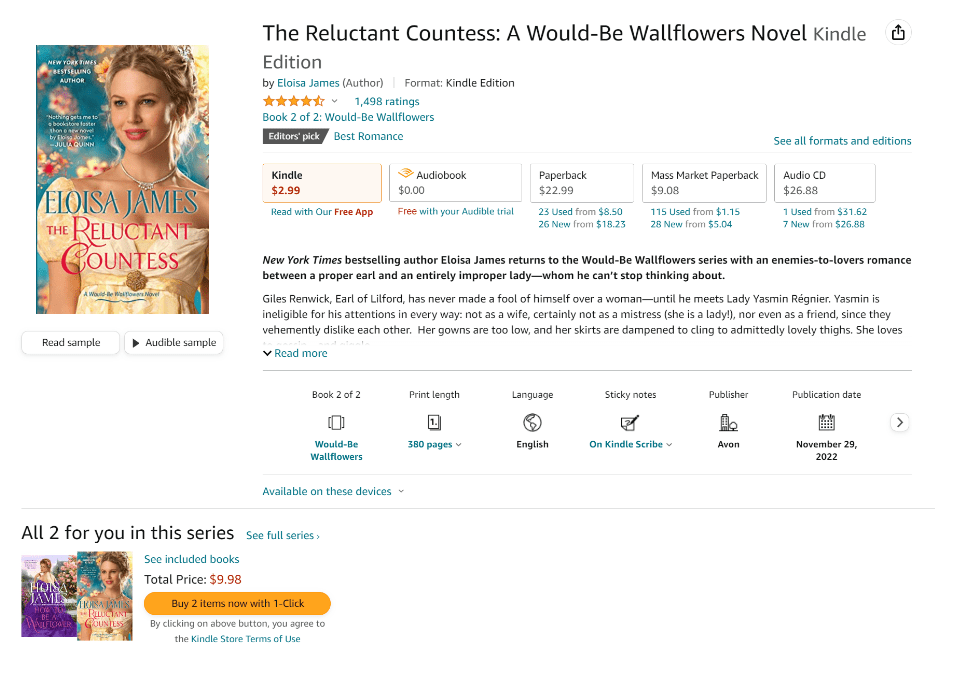This post may contain affiliate links. If you use these links to buy something we may earn a commission at no extra cost to you. Thank you for your support!
Cross-selling is a great way to increase revenue, improve customer satisfaction, and expand your customer base. It involves offering complementary products or services to customers who have already made a purchase, providing them with additional items that are relevant to their needs and interests. Implementing effective cross selling strategies can help you increase the average order value, customer lifetime value, and conversion rate of your online store.
For example, Amazon attributes up to 35% of its revenue to cross-selling, as it suggests related products to customers based on their browsing and purchase history. Spotify uses a similar approach to recommend new songs and artists to users based on their listening history. These examples demonstrate how cross-selling can be personalized to each customer’s needs and preferences, making it more effective than a one-size-fits-all sales tactic.
In fact, cross-selling is one of the easiest ways to increase revenue without having to acquire new customers. According to research by Predictive Intent, cross-selling to existing customers is 60-70% more likely to result in a sale than selling to a new prospect. It’s also a cost-effective way to market additional products or services, as it leverages your existing customer base and customer data to make product recommendations at the right time.
Implementing an effective cross-selling strategy can also lead to improved customer satisfaction and loyalty. By offering products or services that are relevant to your customers’ needs, you’re demonstrating that you understand them and their preferences. This can lead to increased customer satisfaction, loyalty, and word-of-mouth referrals, all of which are valuable assets for any business.
In the rest of this blog post, we’ll explore some cross-selling best practices, examples, and tips that you can use to enhance your ecommerce store’s sales strategy and boost your revenue in 2025.
Examples Of Cross Selling Strategies

Cross Selling Strategies image source: Breadcrumbs
Cross-selling can be applied to any customer journey, from the product page to the checkout page, to follow-up emails, phone calls, and social media campaigns. By providing customers with product recommendations at the right time, you can enhance their shopping experience, and encourage them to return for more.
The most effective ways to implement cross-selling efforts depend on your industry, customer segments, and the type of product or service you offer. However, there are some best practices and real-life examples that can help you get started. For instance, retail stores use point of sale displays or the sales team to promote supplementary products such as discounted items, related items, or limited-time offers. Online retailers, on the other hand, use product bundling, free shipping thresholds, and website pop-ups to suggest additional features, complementary items, or relevant products.
Financial services companies, such as banks and credit card issuers, use cross-selling to promote savings accounts, life insurance, and auto insurance to their existing or current customers. Sales reps and team members can use customer data and past purchases to recommend new products and services, while following up on phone calls, or through follow-up emails. A follow-up call is a great way to increase closing and conversion rates. Online course creators can use upselling to offer additional services or free trials to their prospective customers.

Cross Selling Strategies image source: Teachable
A great example of cross-selling can be found in fast-food restaurants, where servers ask customers if they want to add fries, drinks, or desserts to their orders. This sales tactic has been proven to be effective in increasing the average order value and customer satisfaction.
What Is The Difference Between Cross Selling Strategies And Upsells?

Cross Selling Strategies image source: WPSwings
Cross-selling and upselling are both sales strategies that aim to increase revenue by offering additional products or services to customers. While they have some similarities, there are key differences between them that can impact how they’re implemented in practice.
Upselling refers to the practice of encouraging customers to upgrade or purchase a more expensive version of the original product they’re interested in. This can be done by highlighting the features and benefits of a premium product, or by offering a bundle deal that includes the main product and additional features or services. Upselling is typically done on the product page or during the checkout process, and it focuses on increasing the average order value by encouraging customers to spend more on the main product.
On the other hand, cross-selling refers to the practice of offering complementary products or services that are related to the main product that the customer has already purchased. This can be done by suggesting related products, accessories, or add-ons that enhance the value of the main product. Cross-selling is typically done on the product page, in follow-up emails, or through targeted advertising campaigns. It focuses on increasing the customer lifetime value by encouraging customers to make additional purchases.
Examples:
To illustrate the difference between cross-selling and upselling, let’s take the example of an ecommerce store that sells laptops.
Upselling:
The store can offer an upsell option during the checkout process, where customers can upgrade to a premium laptop model that comes with more memory, faster processing, or additional features. For instance, Apple offers the MacBook Pro as an upsell option for customers who are interested in the MacBook Air.
Cross-selling:
Following up on the Apple purchase above, the store can also offer complementary products, such as laptop bags, external hard drives, or software subscriptions, that enhance the value of the main product. For instance, Microsoft recommends Microsoft 365 and Microsoft Surface accessories to customers who purchase a Surface laptop.
In the example below, there is an order bump on the checkout cart. An order bump is typically a lower-priced item that greatly complements the primary product, so getting it seems like a no-brainer. This increases the average basket size and is a popular method among coaches selling online courses as well as ecommerce store owners.

Cross Selling Strategies image source: Teachable

Cross Selling Strategies image source: Good Housekeeping
In short, upselling aims to increase the average order value by encouraging customers to spend more on the main product, while cross-selling aims to increase the customer lifetime value by encouraging customers to make additional purchases of complementary items.
The Benefits Of Cross Selling

Cross Selling Strategies image source: LinkedIn
So why should you cross-sell?
Cross-selling is a powerful sales strategy that can benefit your business in several ways:

Cross Selling Strategies image source: Tabsquare.ai
- Increases Your Average Order Value Or Average Basket Value: By offering complementary products or services to your existing customers, you can increase the average order value of each transaction. This means that you’ll make more money from each sale, without having to acquire new customers.
- Create Better Long-Term Customers And Profits: Cross-selling isn’t just about increasing revenue in the short term. It’s also about maximizing profits over the long term by encouraging customers to make repeat purchases. By providing customers with additional value through cross-selling, you’ll create loyal customers who are more likely to return and buy from you again in the future.
- Better Customer Satisfaction and Personalized Customer Experience: When you offer complementary products or services that are relevant to your customers’ needs and interests, you’re demonstrating that you understand them and their preferences. This can lead to increased customer satisfaction and a more personalized customer experience. Even if they say no now, due to the personalized experience, they may very well come back and be potential customers who will buy the very thing you recommended to them in the past.
- It’s Easier to Sell to An Existing Customer: Selling to an existing customer is much easier than selling to a new one. This is because you already have a relationship with your existing customers, and they trust your brand. Cross-selling to existing customers is also more cost-effective than acquiring new ones.
- It Secures Customer Loyalty and Improves Retention Rates: Cross-selling can help you secure customer loyalty by providing additional value to your customers. This can lead to increased retention rates, as customers are more likely to return to your business and make additional purchases.
- Boosts Short and Long-Term Profits: Cross-selling can also help you reduce your customer acquisition cost (CAC) by encouraging existing customers to make additional purchases. This can help you improve your customer lifetime value (LTV) and increase your overall profitability.
- Understand Your Customers Better: By cross-selling to your existing customers, you’ll have access to more customer data, such as their purchase history and preferences. This is one of the best ways to better understand your customers’ needs and preferences, and tailor your marketing efforts accordingly.
Cross-selling is a valuable sales strategy that can help you increase revenue, maximize profits, improve customer satisfaction, and secure customer loyalty. By offering complementary products or services to your existing customers, you can create a more personalized customer experience and build stronger relationships with your customers. You can see how cross selling strategies help in Facebook ad conversions as well as Instagram ad revenue. In the next section, we’ll explore some effective cross-selling strategies that you can use to implement this sales tactic in your business.
8 Cross-Selling Examples to Inspire Your Next Marketing Strategy
- Build Out Buyer Segments and Personas: To implement an effective cross-selling strategy, it’s essential to understand your customers’ needs and preferences. One way to do this is by building out buyer segments and personas based on demographic and psychographic data. For instance, if you run an online store that sells skincare products, you can create buyer segments for different skin types and personas based on age, gender, and lifestyle. By tailoring your cross-selling efforts to each buyer segment and persona, you can increase the relevance and effectiveness of your product recommendations.
- The Product Suggestion: One of the simplest and most effective cross-selling techniques is the product suggestion. This involves suggesting related products or services that are complementary to the main product that the customer is interested in. For instance, if a customer is browsing for a laptop, you can suggest a laptop bag or a software subscription as a complementary product. According to a study by Barilliance, product suggestions can increase revenue by up to 10%.

Cross Selling Strategies image source: Ikea
- The Order Bump: Another effective cross-selling technique is the order bump opportunity. This involves suggesting complementary products or services when a customer adds a product to their shopping cart. For instance, if a customer adds a shirt to their cart, you can suggest a matching tie or a pair of shoes as a complementary product. According to a study by Invesp, order bump opportunities can increase revenue by up to 4.4%.

Cross Selling Strategies image source: Ikea
- The Bundle Sales Technique: The bundle sales technique involves offering a bundle of products or services at a discounted price. For instance, if you run an online store that sells fitness equipment, you can offer a bundle of workout equipment, such as dumbbells, resistance bands, and a yoga mat, at a discounted price. According to a study by BigCommerce, offering product bundles can increase revenue by up to 30%.

Cross Selling Strategies image source: Amazon
- The Pop-Up: Pop-ups are a great way to grab the customer’s attention and suggest complementary products or services. For instance, if a customer is browsing for a camera, you can use a pop-up to suggest a camera bag or a memory card as a complementary product. According to a study by OptinMonster, pop-ups can increase conversion rates by up to 9.28%.
- The Cart Drawer Page: The cart drawer page is a great place to suggest complementary products or services before the customer checks out. This can help increase the average order value and improve customer satisfaction. For instance, if a customer has added a printer to their cart, you can suggest ink cartridges or printer paper as complementary products. According to a study by Shopify, the cart drawer page can increase revenue by up to 1.5%.

Cross Selling Strategies image source: Reconvert.io
- The Offer Wall on Thank You Page: After a customer completes a purchase, the thank you page is a great place to suggest complementary products or services. This can help improve customer satisfaction and encourage repeat purchases. For instance, if a customer has purchased a camera, you can suggest a camera lens or a camera bag on the thank you page. According to a study by Baymard Institute, the thank you page can increase revenue by up to 4.38%.
- The Cart Page Cross-Sell: The cart page is a crucial stage in the customer journey, and it’s a great place to suggest complementary products or services before the customer checks out. For instance, if a customer has added a phone to their cart, you can suggest a phone case or a screen protector as complementary products. According to a study by Salesforce, cart page cross-sell can increase revenue by up to 10%.

Cross Selling Strategies image source: Elastic Path
By implementing these cross-selling tips and techniques, you can boost your online store’s revenue, increase customer satisfaction, and improve customer lifetime value. It’s important to remember that not all cross-selling techniques will work for every online store, and it’s essential to test and optimize your cross-selling efforts to see what works best for your business.
Interested in learning about Instagram ad conversions? Check this post out!





